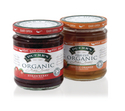Brands say goodbye to Mr and Mrs Average
4 August 2011Brands are making an effort to appeal to the widest possible market by making products accessible to everyone, in the health sector and general lines, writes Joanne Hunter.
Design is about people, not things: this is the mantra of New York agency Smart Design. For the past 30 years the company has specialised in designing products suitable for people of all abilities, including those with limited dexterity. Dan Formosa, one of its founders, and his director of brand communication Paulette Bluhm-Sauriol, explained to Packaging Today why brands increasingly are embracing inclusive design – or universal design, as it is known in the US.
“If we designed for the average we’d miss out half of the population. This approach can be a disservice to people on both sides of ‘average’. Instead, we typically set out to understand the full spectrum of people who will come in contact with the things we design. The rejection of the ‘average’ consumer, in some business circles, is a radical concept – especially to groups within a company who have gone to great lengths to define their average consumer. While the average may be a marketing target (and we often question even its role in marketing), it should never be a design target.
“Average is not where good design is – it resides in the lives of individuals, addressing the personal needs and desires of a wide range of people,” she said. “At Smart Design, we are seeing a change in requests from our clients. They used to ask us to design and develop a product or service. They are now, increasingly, asking us to help them understand their customers. The focus of design has changed, from product to person.”
Lack of usability is a product fault. Every component included with the product, including all the packaging and labelling elements, contributes positively or negatively to overall usability.
“For example, for Cimzia, a rheumatoid arthritis pharmaceutical brand, we designed a home medication delivery system, which included delivery device and packaging designed as one experience that guides medication injection,” explained Bluhm-Sauriol. “The limited-dexterity-friendly package unfolds like a medical kit displaying an easy-to-hold syringe with all supporting injection elements at the ready to guide injection, a quick step guide and tucked-in swabs. When complete, the delivery system folds up to be tucked away in the refrigerator for next time.
“In many product categories, usability, justifiably, becomes an overriding priority. In the medical field, technology has enabled a shift of what we call ‘hospital-to-home’. That procedures performed at home need to be executed flawlessly by untrained people puts an emphasis on usability,” she added.
University researchers in the UK are working on alternative packaging designs for prescription drugs because unsuitable packaging is contributing to poor patient compliance rates.
“Studies suggest that about half of all patients in the US do not take their medication properly,” Dr Alaster Yoxall, from Sheffield Hallam University, told Packaging Today. “This is often because they encounter obstacles with packaging. Products can often be difficult to open or be poorly labelled.
“We have looked at ways of developing child-resistant packaging that still enable older people to gain access. Simple changes in geometry and shape can work effectively on the ability to access packaging, not just on medicines but food and toiletries too.”
Despite tight industry regulation, pharmaceutical packaging has not developed as Dr Yoxall would have expected. Keeping out children is generally seen as a cognitive issue, but he argues that this approach can keep out some adults too. People will take between 12-20 seconds to open a blisterpack, any longer and they simply ‘give up’.
“It wears people out, especially if they are ill,” and so they may decant pills into bowls and other, unlabelled, packaging, adds Dr Yoxall.
‘Socio-psychological’ well-being is also a factor and it is estimated that a quarter of adults will suffer from dementia.
In Europe, blisterpacks are widely used, which Dr Yoxall says are not guaranteed child resistant and may have dexterity issues. He helped develop a test for comparing accessibility based on dexterity. The test was presented to the Design 4 Health conference at Sheffield Hallam that focused on how design can rise to the challenges of an ageing population. “We are really quite proud of the results, and all will be revealed in the coming months.”
Is inclusive design an attractive commercial proposition?
“The big issue here is: Where’s the cost benefit? It’s been really difficult to prove the commercial proposition.” But he thinks that Crown’s new Orbit Closure for Duerr’s jam jars may have moved on this conversation (see story below).
“Improving accessibility is a long, slow process. It is the ‘elephant in the room’. The over-50s generation is growing in numbers and the fastest growing of all is the over-80s. It is a huge demographic change and the market has to respond,” he said. Dr Yolland’s accessibility test is also being used on other small packs.
Access to nutrition in small, single-serve packs is a particular problem. A study of hospital food, by the University of Wollogong in Australia, found difficulty with opening smaller packs was commonly experienced by patients – and 30% of hospital staff – with liquids especially hard to access. “Is this the case in the wider community?” wonders Dr Yolland. “We are moving into a challenging environment for packaging. The UK could get ahead on this; we are world leading on ageing research. This could be an opportunity for retailers and packers, I think.”
There have been some moves in the right direction. Sanner, a German supplier of desiccant closures for the pharma and healthcare sectors, has introduced StripTech One, an easy to use, hygienic packaging system for blood-sugar test strips designed for home diagnostics. The opening prevents the removal of too many test strips and keeps the user’s fingers out of the package. This reduces the risk of contamination or damage to the test strips, which can affect measurement accuracy. A recessed grip makes it easy to open and close the package with one hand. The locking mechanism ensures the top stays open while the test strip is being removed. And a flip-top cap means the user cannot lose or misplace it. In the open position, it reminds the user to close the top after the test strip is removed.
MEPs recently signed a declaration in the European Parliament to support accessible labelling. A ‘milestone’ for blind, deafblind and partially sighted people, it calls for a European Commission consultation on a proposed voluntary system of labelling in accessible formats.
“Deafblind people tell us that access to information is a huge barrier to their independence, and clear Braille labelling on product packaging will mean they can make more informed choices and safely use products in the home,” says Sue Brown, head of public policy at Sense, a deafblind charity in the UK.
Surely, facing the truth that there is not – and never was – a Mr and Mrs Average will make a lot of people very happy, and the brands even more profitable.
Crown cracks it
Crown Closures Europe has worked magic with a jar closure acclaimed easy to open for almost everyone.
Seen for the first time on jars of Duerr’s range of jams and marmalades, the new Orbit Closure could be a surefire way to build a loyal following for many more brands with produce in jars.
It consists of two parts: a central, floating panel that is vacuum sealed to the jar, and an outer ring that acts as the opening and re-closing device. Its design significantly reduces the torque required to remove the closure, making it twice as easy to open compared with standard twist-off closures – enhancing convenience for consumers of all ages. Available in both 63mm and 70mm diameters, it can be introduced without significant changes to existing lines.
To attract consumer attention, the label gives information about the opening sequence of the closure and directs consumers to Duerr’s website, so they can provide feedback about the new packaging.
“Improving openability has been a goal of ours for quite some time, and the Orbit Closure is the first technology that really makes that possible,” confirmed Richard Duerr, sales and marketing director at Duerr’s.
Smart Design’s home medication delivery system for Cimzia, a rheumatoid arthritis pharmaceutical brand. Cimzia Sanner’s StripTech One system that holds up to 50 blood sugar test strips used in home diagnostics. StripTech The new Orbit Closure could be a surefire way to build a loyal following for brands with produce in jars. Orbit Closure Dan Formosa, a founding member of Smart Design. Dan Formosa Paulette Bluhm-Sauriol, director of brand communication at Smart Design. Paulette Bluhm-Sauriol






